
THE SPORTIMONIUM - A SPORTS MUSEUM
The Sportimonium is situated in Hofstade, a district of Mechelen. It is a museum for sports - with a part for the Olympic Games on its own. It is nicely placed, because already in the Thirties there was a beach built here in Hofstade. Since then it is crowded, if it is nice weather. And if one lies the whole day on the beach, an hour or two should be found easily, to make a visit to the museum? Far from. This Sunday there are just two people inside, while thousands lie in the sun outside. Surely it is not the fault of the entry-fee. That costs merely four Euro - for youngsters under 26 even only one Euro.
Still, time passes quickly, once you are inside. It isn't only an exhibition, but also an active-museum, where you may try out things yourself. But first you come into a traditional part, which shows the evolution of sports.
In modern times sports became trendy in the 19th century. But then it were mainly the sons of rich families, who had time (and money) enough for such a "wicked thing". First after some decades of the last century, sports reached out to involve a broader population.
|
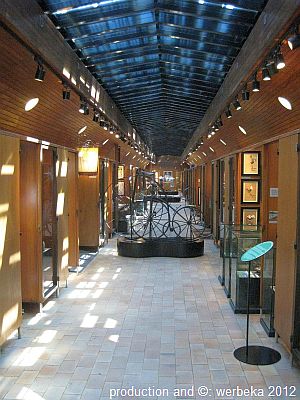
|
It certainly is interesting to get a close-up look at one of the first "bicycles". They had the pedals on the high front wheel, while the back wheel not even reached a fourth of that size. You ask yourself how it ever was possible, that anybody could mount this. But even more specific things catch your eye, as for instance the gloves of the Belgian soccer-goalkeeper Jean-Marie Pfaff.
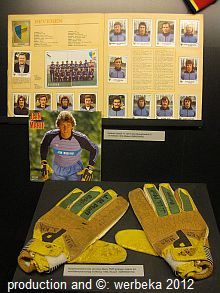 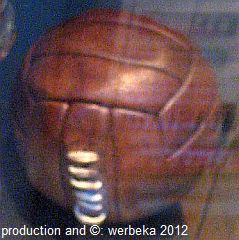 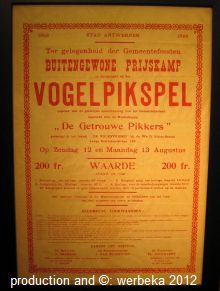
Yet today he is seen as a hero in his country. And while we are talking about soccer ... even the football is a relic, of which the leather has been sewn together by hand and that had to be laced after pumping up. Horrible thought, that I played myself with such balls in my youth ...
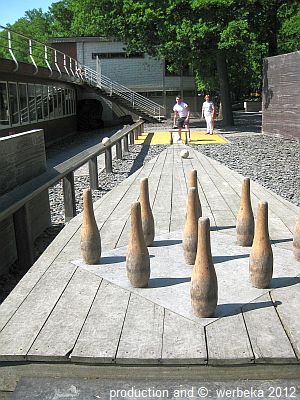 |
Finally there are several posters from long ago, which often cause a smile, but sometimes also some thoughtfulness.
When one has seen enough in this part, one is sent to the playing ground. A clark from the museum comes with you, gets the necessary items and explains some background of the different games. So has the normal game of skittles, with only nine skittles, moved over from Europe to the US. But there the game was forbidden. Some inventive person got the idea to place another skittle there and introduced a "new game" in this way - the game of bowling, that eventually conquered the world. Coming from the US, there is another slight difference. While skittles usually was for free, bowling is rather expensive.
Here you also find the grandfather of all billiard games. In the beginning it was played with much bigger balls and on the ground. Then there is a game, where one has to knock down sticks with different numbers on them, and many more games.
A predecessor of curling you find here as well, even if you don't play that on ice and the stones are not pushed, but rolled. The stones are in the shape of a disc, but one edge is rounded off more than the other.
|
That means, that one can't roll them right against the target, one has to curl them instead. All this you may try on your own and it doesn't cost a cent.
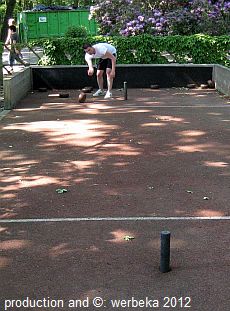 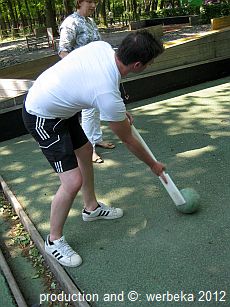 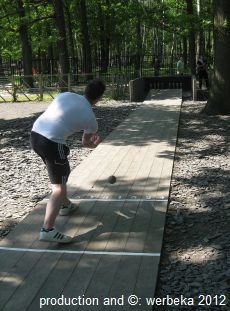
When you have gotten enough of playing, you can reenter the museum and admire the Olympic part of it. In 1920 the Olympic Games werd held in Belgium, in Antwerp. Then it was the first time that the Olympic flag was used, with its five circles.
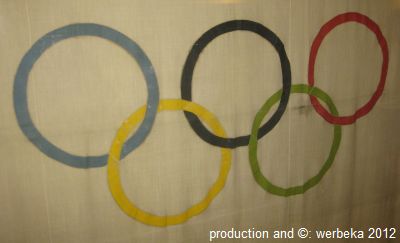 |
One of those you can see in the Sportimonium. At that time the rings were handpainted onto the cloth! It is rather fascinating to examine such a treasure, almost a hundred years old. The Olympic oath was also used for the first time in Antwerp. But after all, the Games were rather a disappointment, because the public was not that interested. The working class had no money for such amusement. Only soccer and cycling had an audience worth mentioning.
Besides, the sportive premises were not the very best.
|
There were no starting blocks for the sprints, but the participants had to dig holes into the track, in order to get away a little quicker. The "swimming stadion" was placed into a canal, that led from the North Sea to Antwerp. The water was dirty and full of rats ...
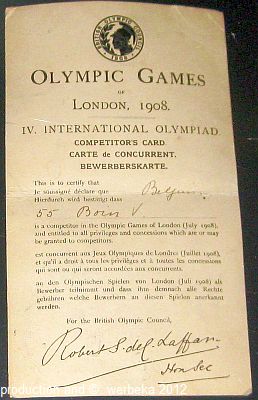 |
The accreditation was easier as well, in those times. A form, on which nationality, starting number and family name were noted, was all one needed. On the other hand, that was in London 1908 - eventually it became safer.
|
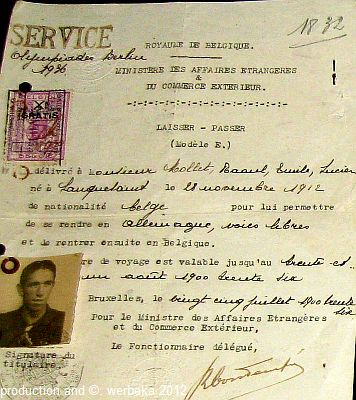 |
But then again, the "passport" (above to the right) is already from 1936 and still very far from the passports of our days. On the other hand you don't need any passport today, if you want to go from Belgium to Germany - neither is your stay limited in time, like then.
Not at least you find here the original of what Pierre de Coubertin said in London in 1908. "Not to win, but to battle well is important", is one of the usual quotations. But that is only a part of what he really uttered. For those not so firm in French, I will try to translate all of it.
"At the Olympic Games it is less important to win, than to participate in them. The important thing in life is not going "all in" in victory, but in the battle; it isn't relevant to have won, but to have done your best."
The collection of Olympic medals at the Sportimonium is worth mentioning as well. From Athens in 1896 until Athens in 2004 there is one medal exhibited, from each of the summer games. I am sure, that those from later games will follow.
|
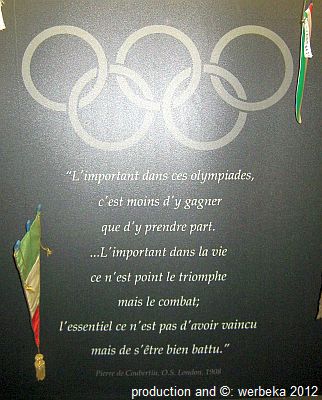 |
When you have seen enough in the Olympic gallery, you are still not done. You can visit a fourth part, which again challenges you actively. You have here the possibility to compete with the results from leading Belgian athletes. Some of them have done all exercises - and their results have been noted. You shouldn't expect, that you really can compete with well trained athletes - but it is still interesting to compare.
Long jump from standing position, lung capacity, balance exercises, speed and many other things are available. How often can you alternately tap on two sandbags with one hand only, given thirty seconds?
What is the reaction of your heart, if you have to bike at a given burden and speed?
All in all the Sportimonium is a world of experience for body and mind - something that you shouldn't miss out on, if you ever come close to it.
© Bernhard Kauntz, Wolvertem 2012
|
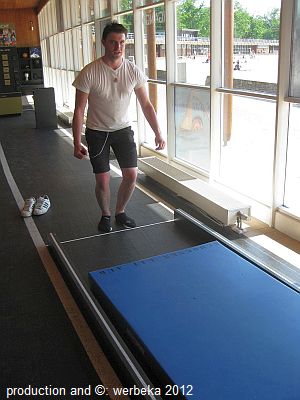 |
Back to  or to the or to the  of of 
last update: 28.6.2012 by webmaster@werbeka.com
|















